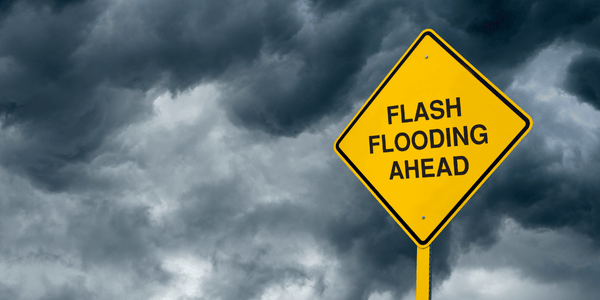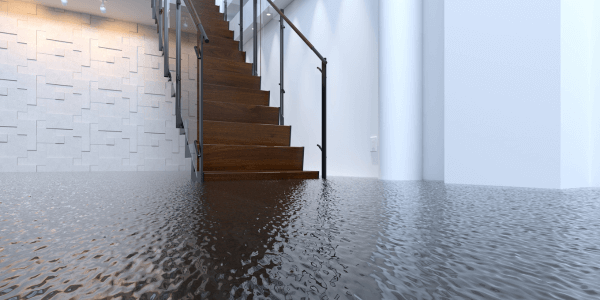

Are You Living in a High-Risk Flood Zone? Here’s What You Need to Know
Have you ever looked at your home on a map and thought, “Wow, I really hope that doesn’t flood”? If you live in a high-risk flood zone, that thought may cross your mind more often than you’d like. Living in these areas can feel like playing a game of chicken with Mother Nature. One moment, sunshine, and the next, you’re looking at rising waters threatening your home and livelihood.
But it’s not just the property that suffers; the emotional toll can be significant too, especially for families and businesses. The anxiety of potential flooding can disrupt your daily life and cause financial strain. That’s why it’s crucial to be prepared and informed. Here at Complete Flood Restoration, we want to help you navigate the ins and outs of living in a high-risk flood zone.
Flood Zones Explained: What Your Map Really Means
Let’s kick things off with the basics: flood zones. You might have seen those flood maps and thought, “What does it all mean?” Well, flood zones are classified based on several factors, including climate, topography, and historical data about flooding events. FEMA has designated various flood zones across the United States, so understanding these classifications can help you anticipate your risks.
– Zone A: Areas that are at risk of flooding but with no real elevation data. Guess what? If you’re in this zone, you’re especially vulnerable.
– Zone V: Coastal areas that face the brunt of storm waves.
– Zone X: Low-to-moderate risk but don’t let that lull you into a false sense of security.
A good tip? Find your flood zone map and keep it handy. Familiarizing yourself with it is like having a cheat sheet; you’ll know exactly what you’re dealing with when the weather turns sour.
Read more:
Know Your Flood Risk- Bexar Watershed Mgmt
Floodplain | Bexar County, TX – Official Website
Stay One Step Ahead: Preparing for Potential Flooding

Preparation is your best friend when living in a high-risk flood zone. Think of it as setting up your home for a surprise party, but instead of balloons and cake, you’re preparing for a flood that could invade your space.
Start by developing a robust emergency plan. This plan should detail how you and your family will respond to a flooding event—where will you go? What supplies do you need? Here are some essentials:
– Assemble a disaster kit with water, snacks, medical supplies, and important documents.
– Have an evacuation plan in place. If your area is prone to flash floods (and if you’re in San Antonio, these can happen), you don’t want to be scrambling for directions when the water starts to rise.
– Don’t forget to tap into your community resources. Local emergency management agencies often have programs designed to help residents prepare for floods.
The Heart of the Matter: Home Protection Strategies
Now that you’ve got your emergency plan down, let’s talk about how to physically safeguard your home from flood damage. After all, it’s easier (and less stressful) to prevent a disaster than deal with the aftermath, right? Here are some strategies we recommend:
– Invest in sump pumps and flood barriers. These can act as your first line of defense against rising waters.
– Utilize landscaping techniques to direct water away from your home. Things like grading your yard or installing rain gardens can do wonders.
– Schedule regular maintenance checks on plumbing and drainage systems to catch any potential issues before they turn into major liabilities. Think of it as a check-up for your home!
Understanding Insurance: Is Your Property Covered?
Okay, let’s get real. Mapping out your flood zone and preparing your home is fantastic, but what about the financial side of things? That’s where insurance comes into play. Unfortunately, many people think standard homeowners insurance covers flooding, but that’s a common misconception!
Flood insurance is a specific policy designed to protect you against water damage from floods, and federal assistance programs can also help. It’s worth your time to:
– Review your current insurance policy and see what’s covered.
– Understand your flood insurance options—FEMA has resources that can help guide you through this process.
– Finally, if you’re in San Antonio and don’t have insurance or need to update your coverage, give your agent a call!
Act Fast: What to Do When the Waters Rise
So, the waters are rising, and you’re in full panic mode. Calm down! Okay, easier said than done, right? In case of a flooding emergency, here are some clear and concise steps to take:
– Stay informed by monitoring news and weather updates.
– Avoid walking or driving through floodwaters. It may look shallow, but you have no idea what’s lurking beneath the surface!
– Evacuate if necessary. Don’t hesitate to leave your home—your safety is the top priority.
And if you find yourself in a sticky situation, remember—we’re just a phone call away. “Call us right away—we respond within 30 minutes!” We’re here to help when you need it most.
Recovery Road: Post-Flood Restoration and Assessment
Should the worst happen and flooding do occur, what comes next? Enter the world of post-flood restoration! It might seem overwhelming at first, but here’s a simplified process:
1. Assess the damage: Carefully inspect your property. This is where knowing your flood zone can help you understand what to expect.
2. You’ll want to act fast; water damage can lead to mold and other issues if left untreated.
3. This is where we come in! Our services like **Emergency Water Extraction** and **Sewage Cleanup** will have your home back on its feet in no time.
Beyond the Disaster: Building a Resilient Community Together
Let’s pivot from being individuals facing a potential disaster to coming together as a community. In the wake of flooding, local organizations can step in to provide support. They create initiatives aimed at flood prevention and recovery, and it’s vital that we all pitch in to strengthen our communal safety net.
Engaging in these local efforts not only helps your neighbors but could also inspire advocacy for better flood response measures. Together, we can build a resilient community ready to face whatever Mother Nature throws our way!
Conclusion: Empowering Yourself in the Face of Flood Risk
In summary, living in a high-risk flood zone might feel daunting at times, but preparation and quick action can equip you to handle emergencies effectively. Stay informed, have an emergency plan ready, and remember to reach out to professionals like us at Complete Flood Restoration for your restoring needs.
Lastly, don’t wait until it’s too late—contact Complete Flood Restoration today for a free assessment!
We’re committed to ensuring you and your property are safe, sound, and ready for anything. After all, a little preparation can go a long way toward peace of mind!
